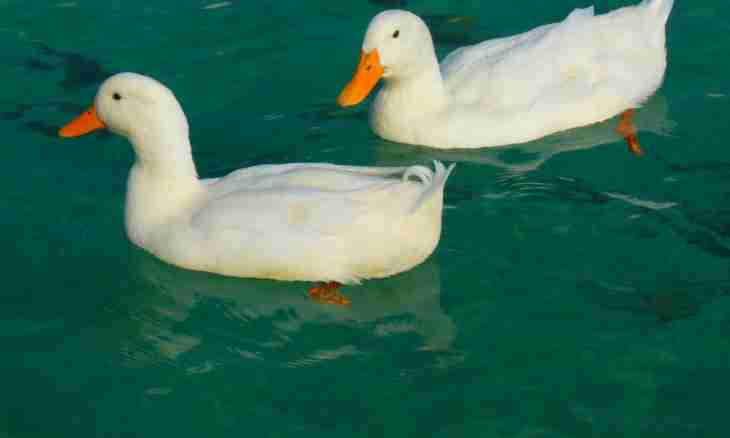One of the few waterfowl – a duck – was cultivated at the beginning of the 17th century. Monks in one of monasteries at first just lured wild birds, and then learned to part them, however, held ducks only on water, the bird perfectly swims.
Ducks are birds of averages or rather small sizes. The group of duck includes several genus of birds, it can be krokhal, river ducks, savka or about 100 more types. There are these birds both wild – their names are wild ducks, and house - drakes and actually ducks.
Get divorced the person of a duck for receiving meat and eggs for a long time, the feather goes on production of filler for pillows, mattresses and blankets and also is used in a number of garments.
On the earth, in water and air
It is known that many birds can land on water and even to spend on it some time, thanks to the air bag reducing their specific weight significantly. But there are birds which life is connected directly with water, which ducks also treat. In this regard they developed physiological devices for swimming and even diving.
Fat secret
Body of ducks a little splusnuto that helps them to float better. The hollow bones facilitated. The waterproof plumage covered with oily liquid it is much more dense, than at the majority of birds, especially in the lower part of a trunk that helps to resist to soaking. For this reason the bird perfectly transfers autumn bad weather and the long time in cold water can float. Fat liquid is produced by special gland which is located near a tail of a duck. Every time before going to water the duck repeats the procedure of lubricant of the feathers anew. The bird gets up and as if shakes off, making muscular wave movements, at the same time feathers rise at the basis and "fat" easily covers each feather. The same fat lubricant increases the volume of a body of a duck that too plays an important role when swimming. It is experimentally proved that if a bird to deprive of lubricant or to cover with a dense layer of impenetrable substance, for example, oil, the duck will not be able to float.
The fat hypodermic at ducks is well developed, it serves as a temperature regulator, preventing overcooling at low water temperatures.
Paws flippers
Paws of these birds are also intended for swimming: three mobile fingers are directed forward and connected by a special swimming membrane. At some types the leather fringe of each finger separately develops, it increases the general surface of resistance and strengthens paw push power about the water surface at rowing. Joints of paws also the building serve for simplification of the movement in water, they are mobile and powerful. Also it is necessary to notice that paws of ducks just do not feel cold and therefore do not freeze even at rather low water temperature.

